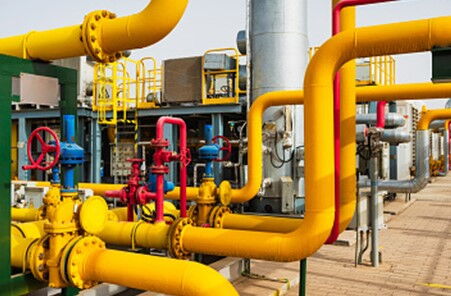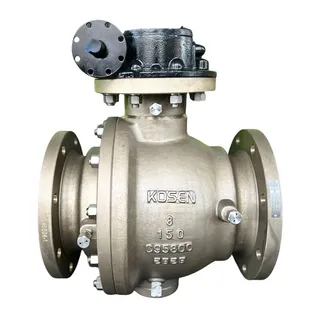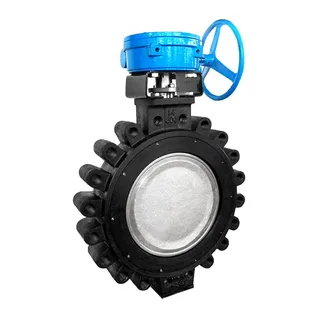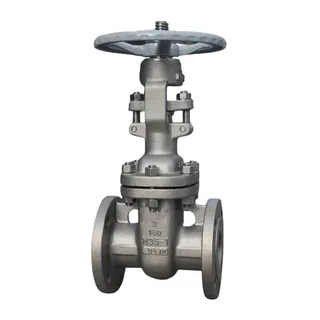
This article explores the critical role of valves in the chemical industry, emphasizing their function in regulating flow, pressure, and temperature under challenging operating conditions. With chemical processes involving highly corrosive, high-temperature, and high-pressure media, valves must be designed for exceptional sealing, corrosion resistance, and operational reliability. The material selection for valves is particularly crucial, including stainless steel, titanium, and nickel-based alloys, with specialized linings for highly aggressive substances. Additionally, the article examines the importance of sealing materials and temperature and pressure resistance, ensuring valve durability in extreme environments.
In the chemical industry, valves play a crucial role as key control devices responsible for regulating flow, pressure, and temperature. As the complexity of operating conditions and the variety of media in chemical production processes increase, the performance requirements for valves continue to rise. Particularly in extreme conditions, such as high temperatures, high pressures, and corrosive media, valves must not only offer excellent sealing performance and corrosion resistance, but also maintain stability and efficiency over extended use. Therefore, the design, material selection, and reliability of the valve's operating system become critical factors in ensuring production safety, improving efficiency, and reducing costs. To address these challenges, valve technology is constantly evolving, incorporating new materials and intelligent control systems to meet the diverse needs of safety, stability, and economic efficiency across different industries.
The chemical production processes involve a wide range of media, including acids, alkalis, salts, and organic solvents. These media have highly active chemical properties and are often highly corrosive. As a result, the material selection for valves must offer excellent corrosion resistance to ensure long-term use without damage. Common corrosion-resistant materials include stainless steel, alloy steel, titanium, and nickel-based alloys. These materials can resist the corrosion of most aggressive media, extending the valve's service life.
For certain highly corrosive media, such as hydrofluoric acid and concentrated sulfuric acid, traditional metal valves may not meet the requirements. In these cases, lining technology is a common solution. For instance, fluoropolymer linings (such as PTFE linings) or rubber linings can significantly improve the valve's corrosion resistance, preventing the media from directly contacting the valve's metal components and enhancing its service life and safety.
The sealing performance of a valve directly affects the risk of media leakage, which is especially critical in environments with high pressure, high temperature, or hazardous substances. Poor sealing can lead to severe safety accidents. Therefore, the valve's sealing structure design must be reasonable, and the sealing materials must possess good wear resistance, creep resistance, and high-temperature tolerance. Common sealing materials include PTFE, graphite, and ceramics.
When selecting sealing materials, it is essential to match them with the properties of the working media and operating conditions to ensure the valve maintains efficient sealing performance over time. This prevents environmental pollution and safety hazards caused by sealing failure.
During chemical production, valves may face extreme temperature and pressure conditions. For instance, valves used in high-temperature reactors must withstand high-pressure, high-temperature environments, while valves in low-temperature refrigeration systems need to maintain good mechanical performance at very low temperatures. As such, the materials and structural design of valves must be capable of withstanding the required operating temperatures and pressures.
High-temperature materials commonly include heat-resistant steels and high-temperature alloys, while low-temperature materials may include austenitic stainless steel and aluminum alloys. These material choices not only ensure the valve operates effectively in high- or low-temperature environments but also prevent valve damage and operational difficulties caused by temperature fluctuations.
The operational reliability of chemical valves directly impacts the stability and safety of the production process. Valves must open and close flexibly and reliably, avoiding accidents caused by improper operation or equipment failure. To improve the automation level of valve operation, electric, pneumatic, or hydraulic actuators are often used. These actuators ensure that valves operate stably under various conditions and can provide remote control and automatic protection functions. This is particularly important in hazardous environments, where the reliability of automated systems is crucial.
Remote control systems can respond quickly to anomalies, avoiding risks due to human error or mechanical failure. Additionally, automatic protection functions can shut off the media flow in case of system faults, ensuring the safety of operators and equipment.
In industries such as fine chemicals or pharmaceuticals, the production process demands extremely high cleanliness standards for the media. As a result, the internal structure of valves should be simplified to reduce dead zones and areas prone to dirt accumulation, facilitating cleaning and maintenance. The valve design should minimize unnecessary recesses and dead zones to avoid the accumulation of impurities or contamination during operation.
Moreover, the sealing materials should be chosen to resist shedding or decomposition, preventing aging or dislodging of seals and avoiding contamination of the media. This ensures product purity and meets the strict requirements of precision manufacturing and the pharmaceutical industry.
The service life of valves directly impacts production costs and maintenance frequency. Chemical valves should have a long service life to reduce the economic losses caused by frequent replacements and downtime. Additionally, valve economics is an important consideration, ensuring that valves provide good performance and safety while minimizing procurement and maintenance costs.
For example, certain high-performance ceramic valves may be more expensive initially, but their self-lubricating properties and long service life can significantly reduce replacement and maintenance frequency, ultimately saving substantial maintenance costs for enterprises.
In environments with corrosive media, selecting the appropriate valve material is crucial. Incorrect material selection can lead to equipment damage, accidents, or disasters. Statistics show that approximately 60% of chemical equipment failures are caused by corrosion. Therefore, material selection during the valve selection process must be scientific to avoid choosing unsuitable valve materials.
Sulfuric acid is a highly corrosive media commonly used in chemical production. The corrosiveness of sulfuric acid varies significantly depending on its concentration and temperature. For sulfuric acid with a concentration greater than 80% and a temperature below 80°C, carbon steel and cast iron can offer good corrosion resistance, but they are unsuitable for high-flow sulfuric acid. Common stainless steels (e.g., 304, 316) also have some corrosion resistance, but their use in sulfuric acid environments is limited. High-silicon cast iron or high-alloy stainless steel (e.g., 20-grade alloy) is more suitable, and fluoropolymer linings (e.g., F46) also provide excellent corrosion resistance.
Most metals do not resist hydrochloric acid corrosion, especially common stainless steels. Materials that offer better corrosion resistance to hydrochloric acid include rubber linings and fluoroplastics (e.g., polypropylene, PTFE). However, when the temperature exceeds 150°C or the pressure exceeds 16 kg, the performance of these plastic materials is limited. In such cases, ceramic ball valves become an ideal choice due to their self-lubricating and corrosion-resistant properties, which extend the valve's service life.
Stainless steel is commonly used as a corrosion-resistant material in nitric acid, especially molybdenum-containing stainless steels (e.g., 316, 316L), which offer good corrosion resistance to concentrated nitric acid at room temperature. For high-temperature nitric acid, titanium and titanium alloys should be used. Acetic acid is highly corrosive, and ordinary steel is unsuitable for use under any concentration or temperature, while stainless steel (e.g., 316) shows good corrosion resistance.
Chemical valves play a vital role in production processes, influencing not only efficiency but also safety and economic factors. Through scientific material selection, structural design, and optimized sealing performance, the corrosion resistance, temperature and pressure tolerance, and service life of valves can be significantly improved, ensuring the stability and safety of chemical production. In corrosive media environments, valve material selection must be carefully adjusted based on specific working conditions to ensure long-term stable operation and reduced maintenance costs.



